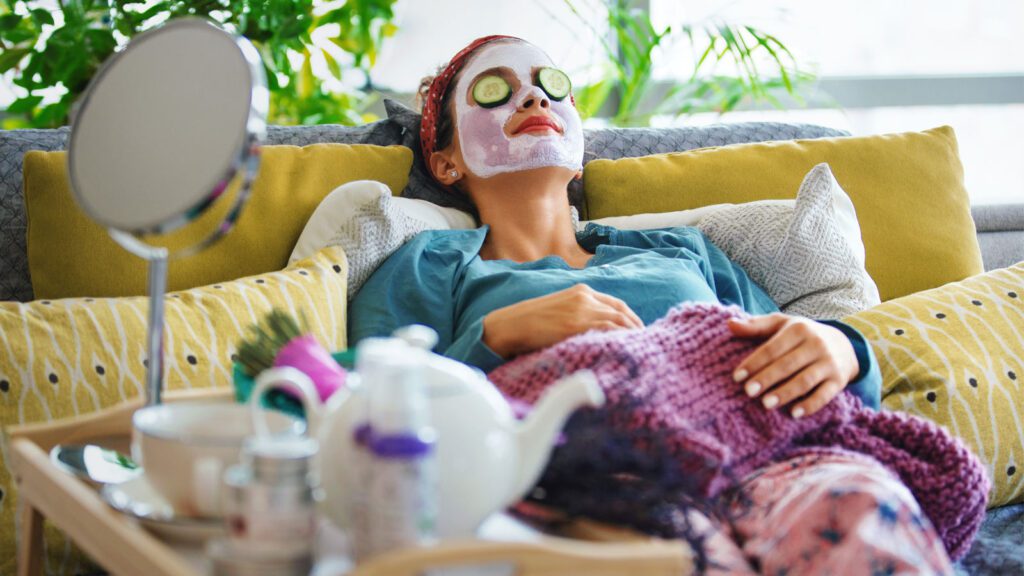Creating a Wellness Playlist
Listen carefully. No really, there’s self-care in what you listen to. Music therapy is an evidence-based wellness technique that requires only your ears and a playlist, and isn’t pseudoscience – it’s evidence-based. Which songs can help move your mood in the right direction is determined by a number of quantifiable and science-based factors, like beats per minute, but it’s also contingent upon taste. A song you dislike isn’t going to focus or relax you if you don’t enjoy it, so don’t force the smooth jazz if you’re more of a Chopin fan (hey, that rhymes!).
Music has been shown to cause a dopamine release in the listener, and while dopamine is most commonly associated with feelings of euphoria, it’s also tied to motivation and concentration. All of these are positive effects, but if you’re seeking a particular mood swing, you can make an educated choice. While some music therapy might seem intuitive, some recommendations might surprise you. To help you get your playlist started, we’ve picked a few songs to try, and offered some science on why they often work.
Relaxation: Consciously Calm
If you want to relax but not doze off, research shows songs with approximately 60 beats per minute (bpm) can synchronize with your brain. This encourages alpha brainwaves for an alert but easy state.
- Chopin: Nocturne in E Flat Major Op. 9 No. 2
- Natalie Cole: This Will Be (an Everlasting Love)
- Death Cab for Cutie: Grapevine Fires
Memory: The Mozart Effect
For study, make something classical your first stop. The so-called “Mozart Effect” has been somewhat debunked due to inconclusive research, but studies have indicated that orchestral music may benefit recall. One study in particular played the same classical music for subjects during study and then repeated that song during sleep. Students who used this method performed almost twice as well as their peers in the control group.
- Vivaldi: Mandolin Concerto in C Major
- Mozart: Symphony No. 40 in G Minor
- Tchaikovsky: Swan Lake Op. 20 Act II No. 10
Sleep: Tune In & Turn In
Remember the beats-per-minute guideline for alert relaxation? This comes with a delta brainwave, which differs from the alpha brainwave mentioned above. Choose calming music of 60 bpm or fewer and don’t expect to doze immediately. It may take 45 minutes or more of sustained listening while in a sleep-ready posture to achieve drift-off.
- Bjork: Utopia
- Erik Satie: 3 Gymnopedies No. 2
- Prokoviev: Romeo and Juliet Op. 64
Advanced Technique: The Iso Principle
Compiling your playlists above is an enjoyable and effective way to use music as therapy, but if you are trying to move from one strong mood into another, try this technique utilized by some professional music therapists: The Iso Principle. This is used to move from one (undesired) mood into another (desired) emotional state. You need to change the station, but it’s slightly more nuanced than that.
Simply put, you start with a song that matches your current mood, let’s say anger. Choose a song that matches where you are emotionally, then follow that with something slightly less aggro. Keep going, moving each song choice incrementally from the mood you’re in toward the mood you’re trying to achieve – let’s say calm.
This is just an overview of a few ways to decompress as needed, but there’s a lot of available science and theory about using music as mental and physical medicine. Whether you want to combat stress, enhance your focus, or shift your mood, music can be a powerful tool for well-being and psychological fitness. Basically, you’re just using music to retune. Here’s to your instrumental health!
This post was brought to you by the music and wellness lovers at West Coast University. For more Decompression Sessions and other health insights, visit the Health Tips section of our blog.
WCU provides career guidance and assistance but cannot guarantee employment. The views and opinions expressed are those of the individuals and do not necessarily reflect the beliefs or position of the school or of any instructor or student.



